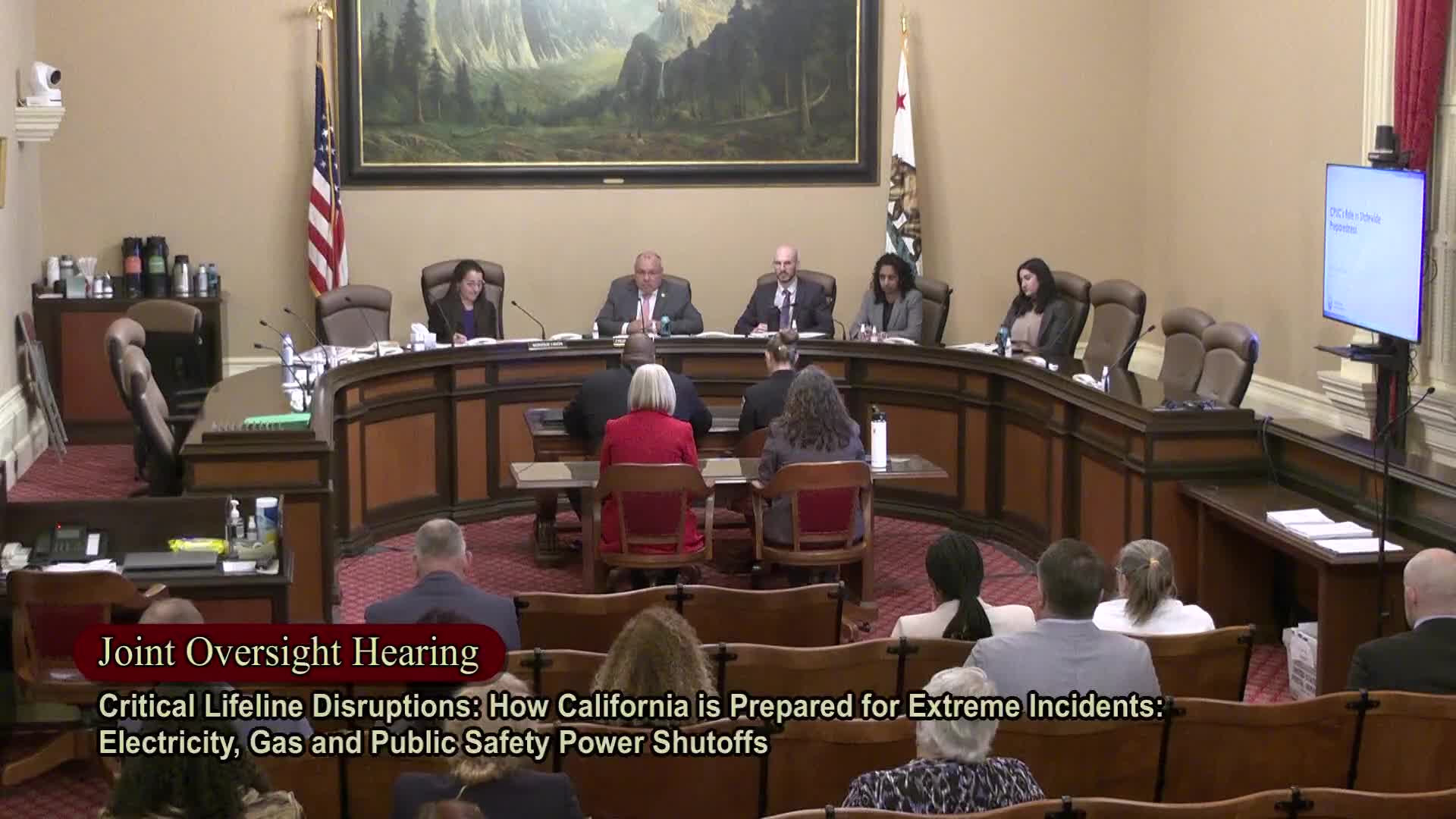Oakland develops comprehensive earthquake preparedness plan amid rising disaster risks
April 08, 2024 | California State Assembly, House, Legislative, California

This article was created by AI summarizing key points discussed. AI makes mistakes, so for full details and context, please refer to the video of the full meeting. Please report any errors so we can fix them. Report an error »

On April 8, 2024, the Joint Hearing Assembly Committee on Emergency Management convened to address pressing issues related to disaster preparedness and response in California, particularly focusing on the city of Oakland's strategies in light of its history with natural disasters. The meeting highlighted the city's proactive measures to mitigate risks associated with earthquakes, wildfires, and power outages, which have increasingly affected local communities.
Oakland has faced significant challenges over the years, including the devastating Loma Prieta earthquake in 1989 and the Oakland Hills fire in 1991. In recent years, the city has experienced numerous power utility shutoffs, which have severely impacted residents, particularly those reliant on electricity for medical needs and food preservation. These challenges have prompted Oakland to strengthen partnerships with regional fire departments and emergency management agencies, enhancing their collective response capabilities.
A key focus of the meeting was Oakland's Local Hazard Mitigation Plan, which aims to identify and reduce risks from various disasters. The plan emphasizes the city's vulnerability to earthquakes, particularly due to its location along three major fault lines: the San Andreas, Hayward, and Calaveras faults. The Hayward Fault, in particular, poses a significant threat due to its high slip rate and urban proximity, necessitating urgent preparedness measures.
To address these risks, Oakland has initiated several strategic actions, including a soft-story apartment retrofit program targeting 22,000 buildings to ensure they can withstand earthquakes of magnitude 5.0 or greater. The city is also seeking grant funding to support these efforts and has developed a continuity of operations plan to maintain essential services during emergencies.
Additionally, the city is implementing an energy assurance plan that includes prewiring for rapid connections and backup generators for critical facilities. This plan aims to ensure that essential services, such as city hall and police administration, remain operational during power outages.
The meeting also underscored the importance of addressing racial disparities in disaster preparedness. Oakland officials are working to identify vulnerable populations to prioritize their needs during emergencies, ensuring equitable access to resources and support.
In conjunction with these efforts, the Port of Oakland is conducting a liquefaction study to assess risks at marine terminals and develop mitigation strategies. The city is also committed to updating its hazard mitigation plans every five years to adapt to evolving climate risks and community needs.
As the meeting concluded, it was clear that Oakland is taking significant steps to enhance its disaster preparedness and response framework. The collaborative efforts between local and state agencies aim to create a more resilient community capable of effectively managing the challenges posed by natural disasters. The ongoing dialogue and planning will be crucial as the city continues to navigate its vulnerabilities and work towards a safer future for all residents.
Oakland has faced significant challenges over the years, including the devastating Loma Prieta earthquake in 1989 and the Oakland Hills fire in 1991. In recent years, the city has experienced numerous power utility shutoffs, which have severely impacted residents, particularly those reliant on electricity for medical needs and food preservation. These challenges have prompted Oakland to strengthen partnerships with regional fire departments and emergency management agencies, enhancing their collective response capabilities.
A key focus of the meeting was Oakland's Local Hazard Mitigation Plan, which aims to identify and reduce risks from various disasters. The plan emphasizes the city's vulnerability to earthquakes, particularly due to its location along three major fault lines: the San Andreas, Hayward, and Calaveras faults. The Hayward Fault, in particular, poses a significant threat due to its high slip rate and urban proximity, necessitating urgent preparedness measures.
To address these risks, Oakland has initiated several strategic actions, including a soft-story apartment retrofit program targeting 22,000 buildings to ensure they can withstand earthquakes of magnitude 5.0 or greater. The city is also seeking grant funding to support these efforts and has developed a continuity of operations plan to maintain essential services during emergencies.
Additionally, the city is implementing an energy assurance plan that includes prewiring for rapid connections and backup generators for critical facilities. This plan aims to ensure that essential services, such as city hall and police administration, remain operational during power outages.
The meeting also underscored the importance of addressing racial disparities in disaster preparedness. Oakland officials are working to identify vulnerable populations to prioritize their needs during emergencies, ensuring equitable access to resources and support.
In conjunction with these efforts, the Port of Oakland is conducting a liquefaction study to assess risks at marine terminals and develop mitigation strategies. The city is also committed to updating its hazard mitigation plans every five years to adapt to evolving climate risks and community needs.
As the meeting concluded, it was clear that Oakland is taking significant steps to enhance its disaster preparedness and response framework. The collaborative efforts between local and state agencies aim to create a more resilient community capable of effectively managing the challenges posed by natural disasters. The ongoing dialogue and planning will be crucial as the city continues to navigate its vulnerabilities and work towards a safer future for all residents.
View full meeting
This article is based on a recent meeting—watch the full video and explore the complete transcript for deeper insights into the discussion.
View full meeting
